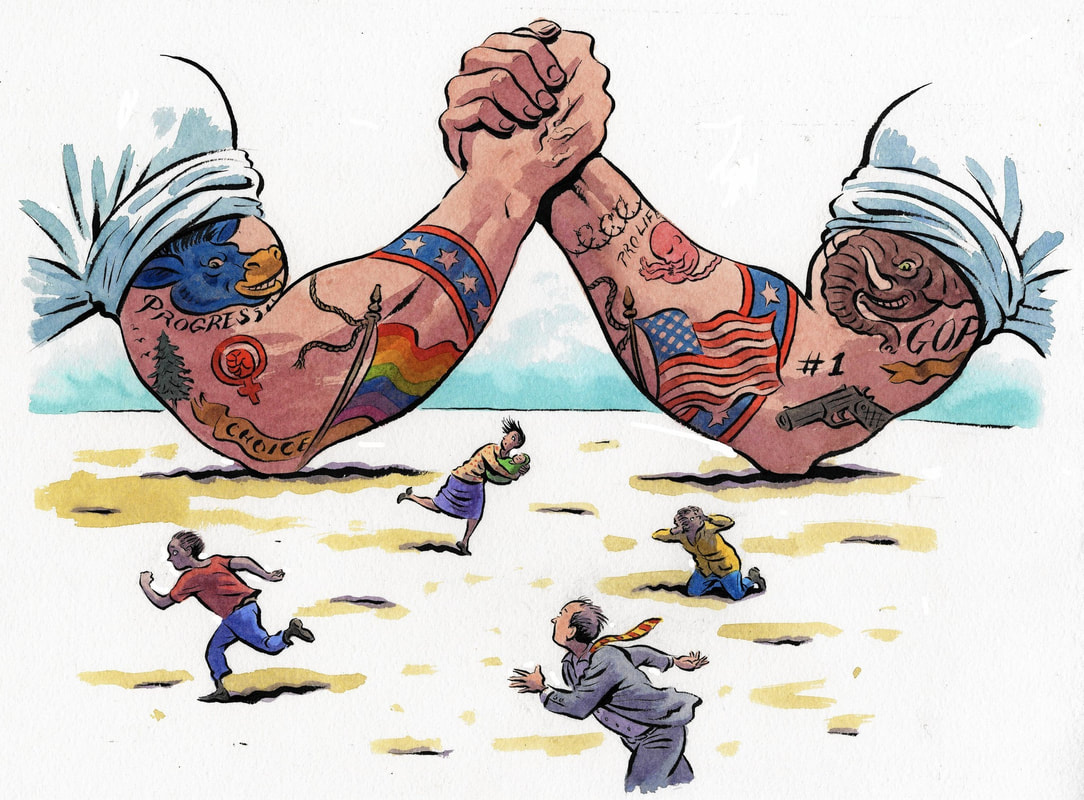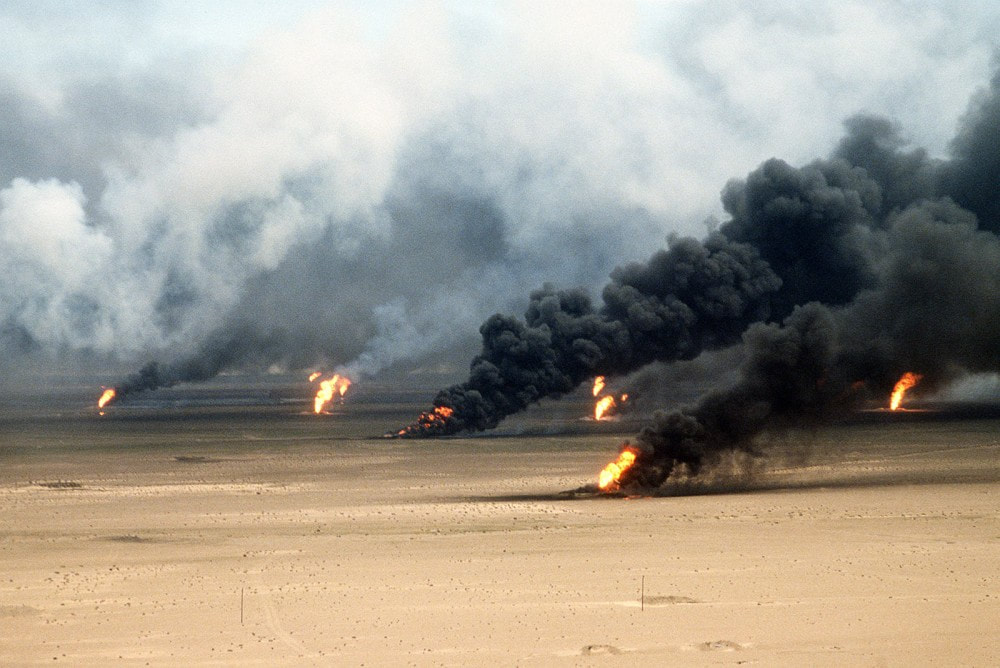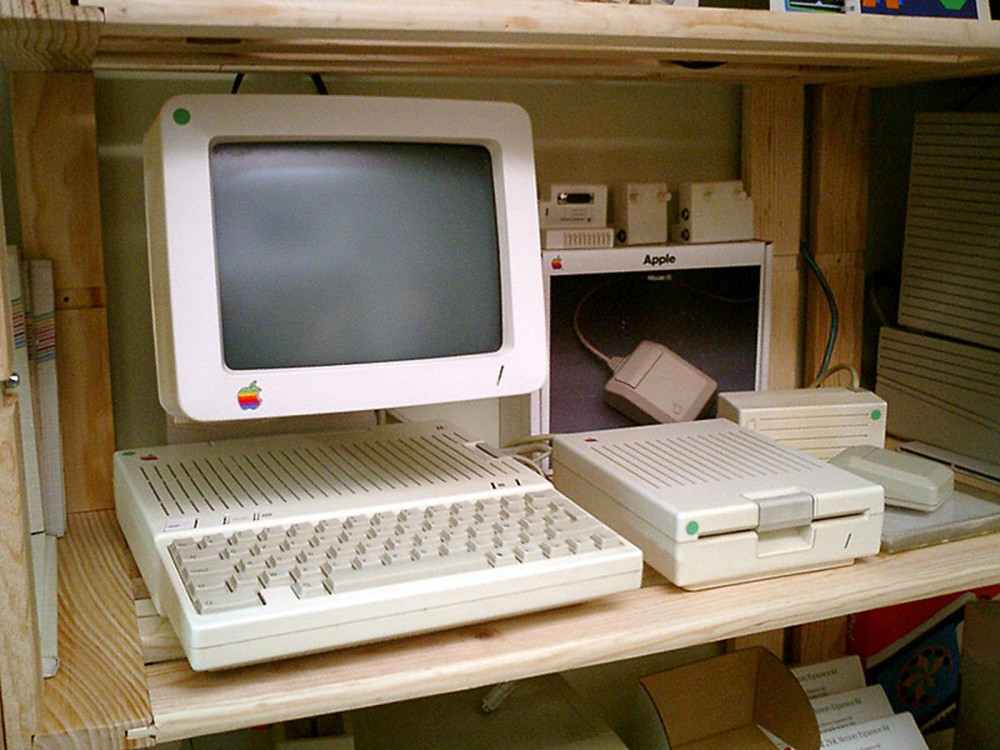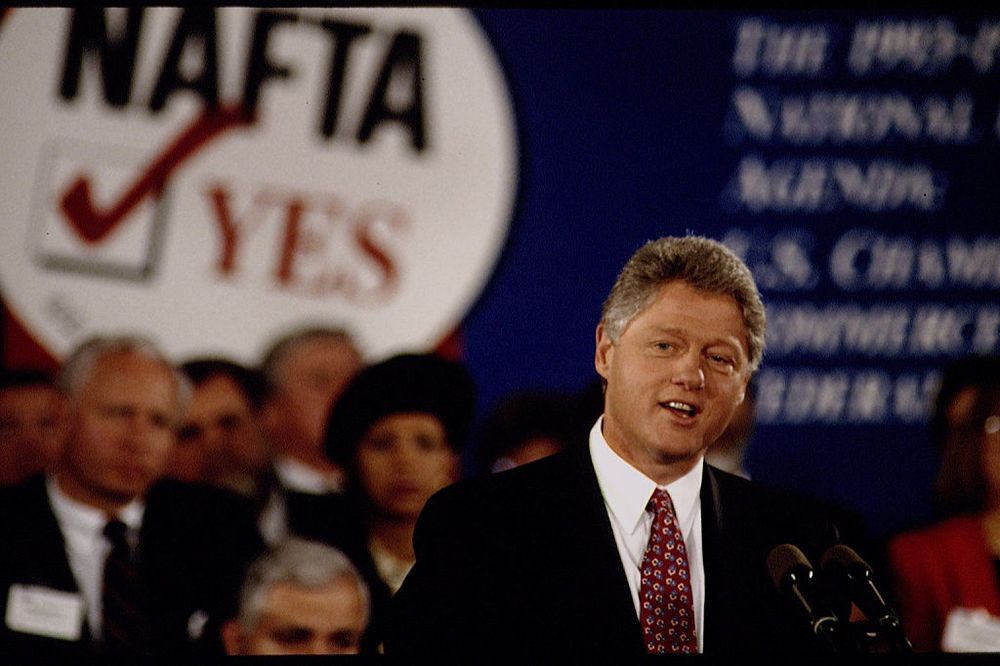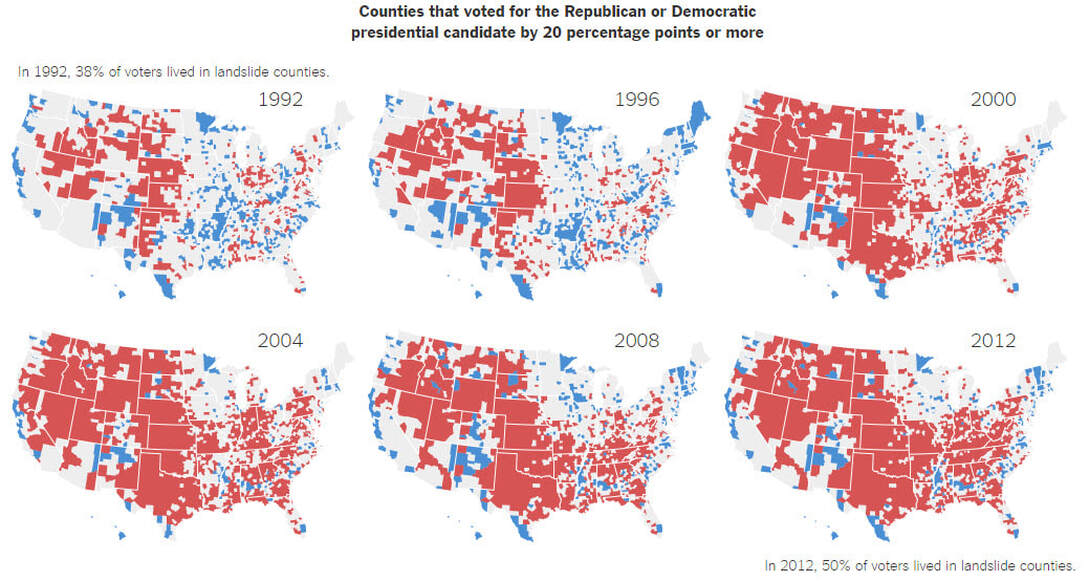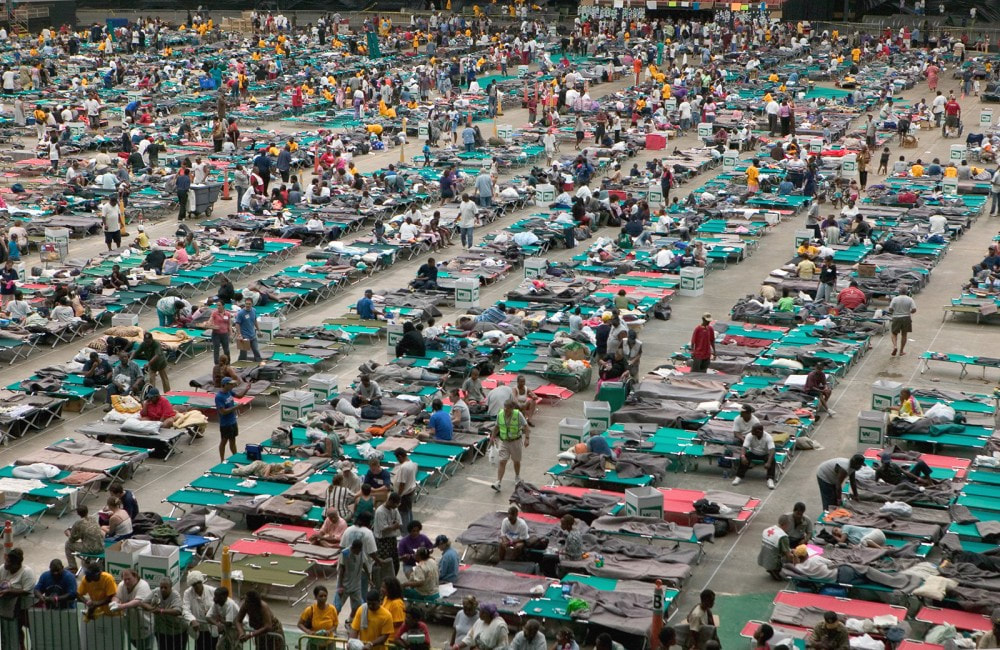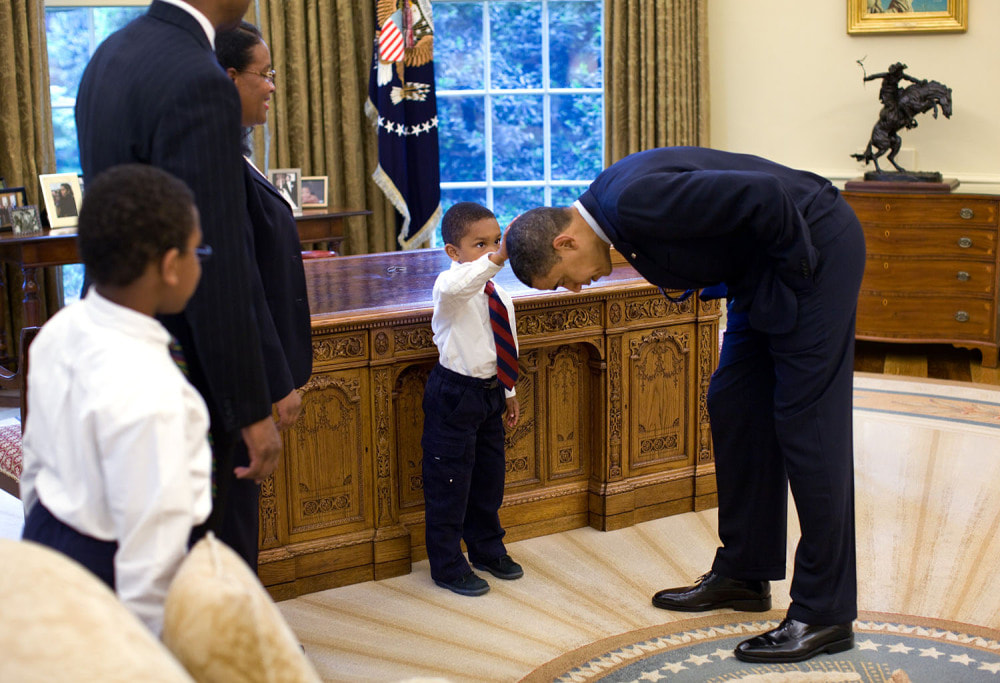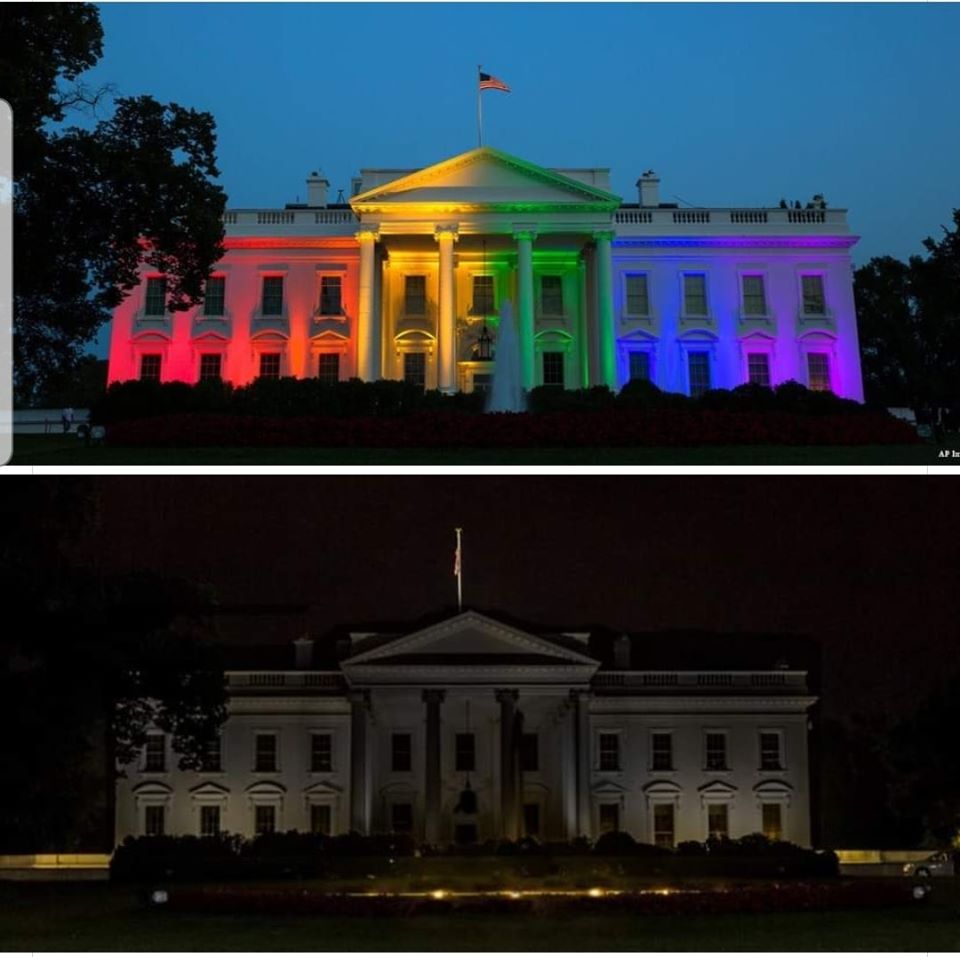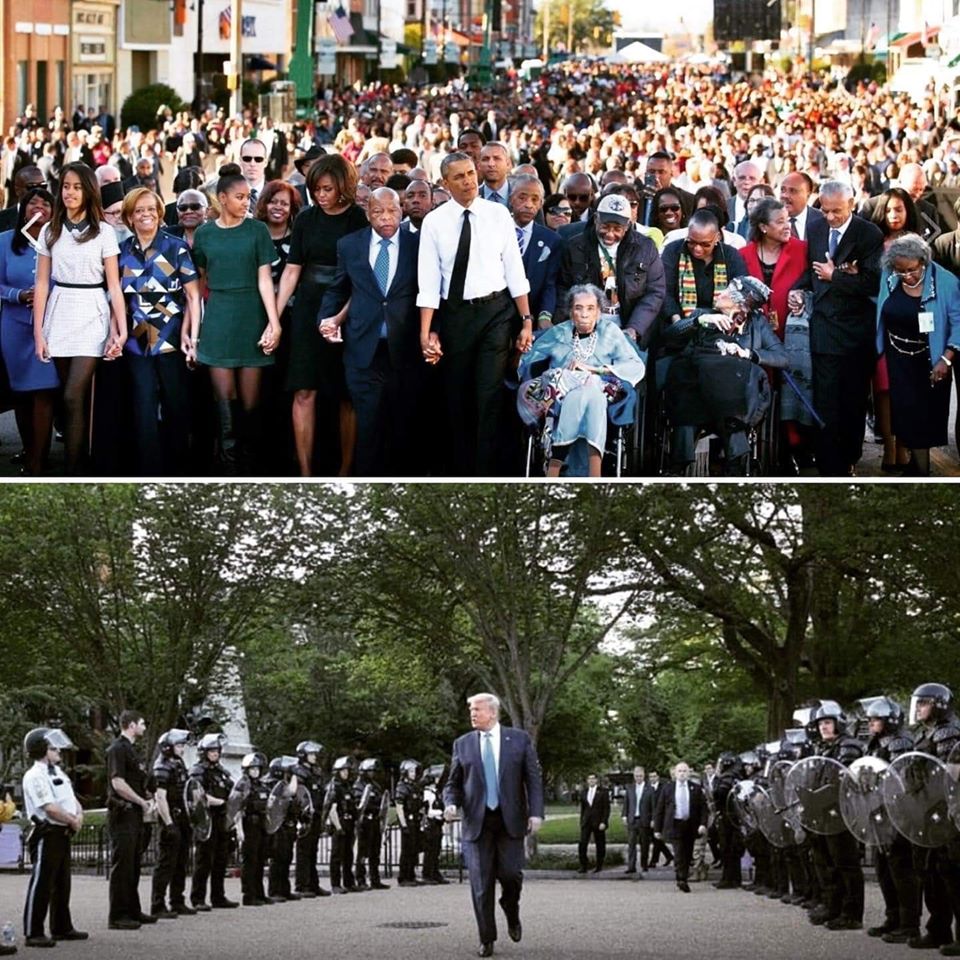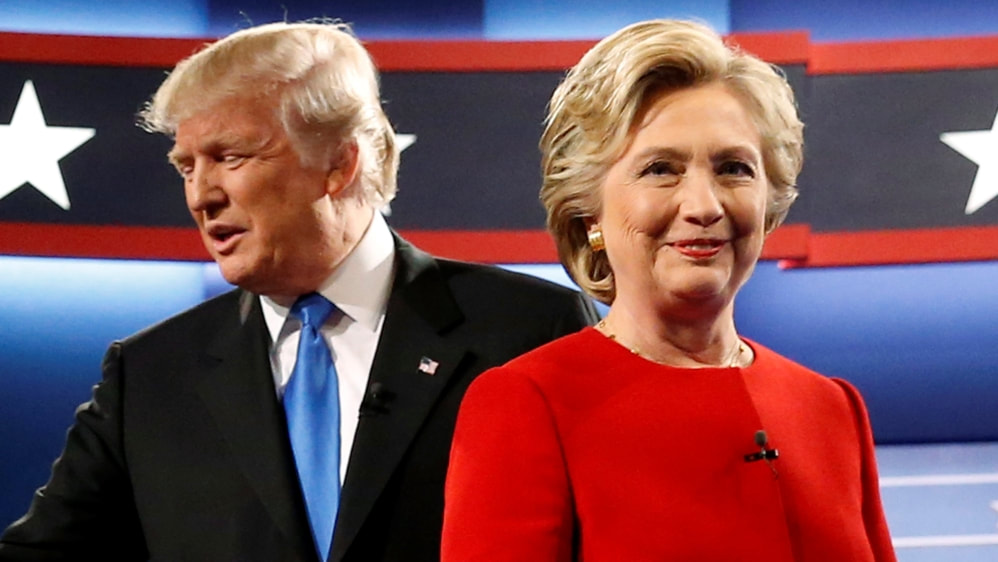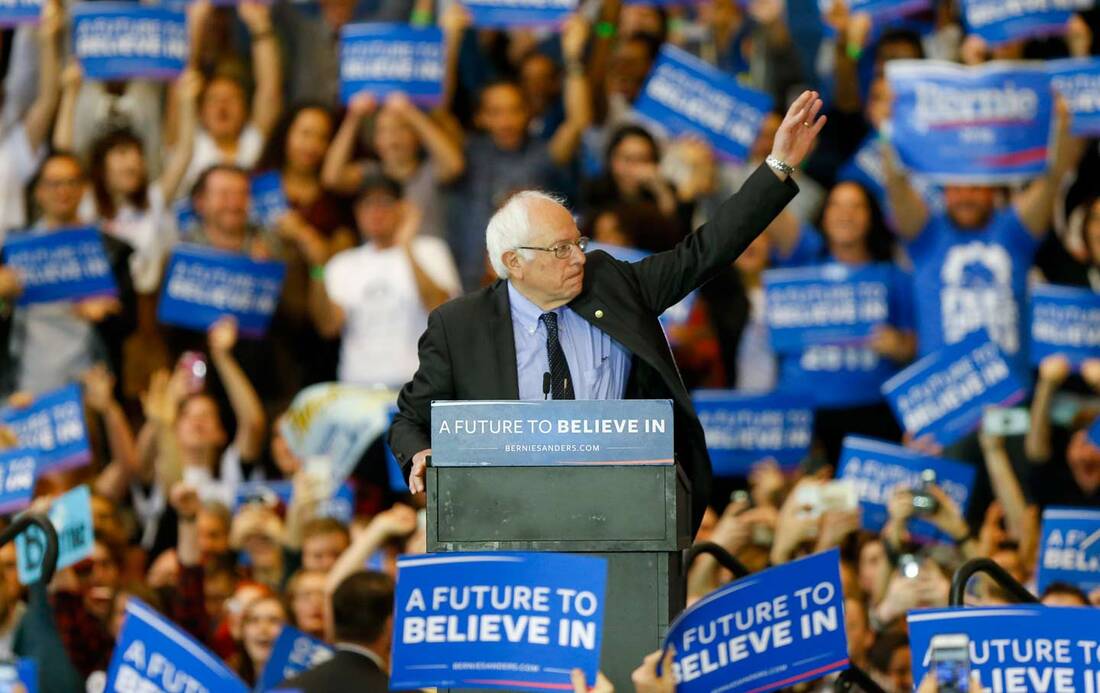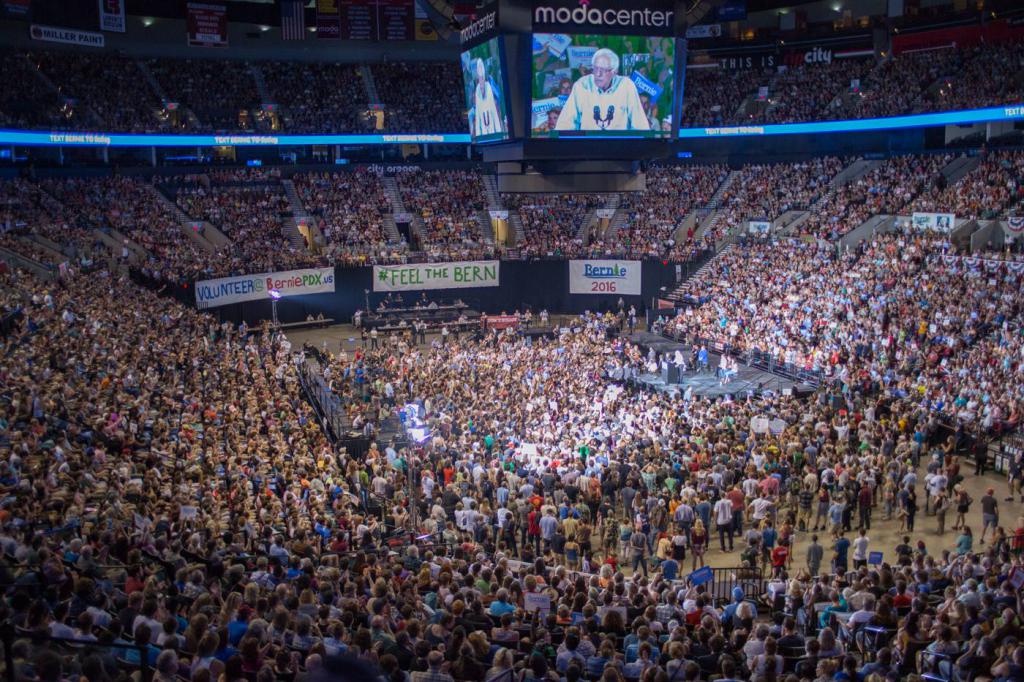The Culture Wars
1990s-2020s
Contents
The Culture Wars, 1990s-2020s
The Bush 41 Era
During the Gulf War, the Iraqi military set fire to Kuwait’s oil fields, many of which burned for months. March 21, 1991.
Review:
- Why did the United States go to war with Iraq during the George H.W. Bush presidency?
- What led to the Los Angeles riots in 1992?
The Clinton Era
|
Introduced in 1977, the Apple II was the smallest and sleekest personal computer model yet introduced. Indeed, it revolutionized both the substance and design of personal computers. By the 1990s computers were common in American personal and public lives.
|
The North American Free Trade Agreement (NAFTA) reduced trade barriers between Canada, the United States, and Mexico, expanding the availability of low-cost consumer goods but also eliminating many American manufacturing jobs.
|
Review:
- How did Bill Clinton reshape Democratic Party politics?
- How have technological changes and globalization transformed the American economy?
- What were the successes and failures of the Clinton presidency?
- Why did the U.S. not intervene in the Rwandan Genocide? Why did NATO intervene in the Bosnian Genocide?
- Why led to the Clinton impeachment and his acquittal?
The Bush 43 and Obama Eras
|
Hurricane Katrina was one of the deadliest and more destructive hurricanes to hit American soil in U.S. history. It nearly destroyed New Orleans, Louisiana, as well as cities, towns, and rural areas across the Gulf Coast. It sent hundreds of thousands of refugees to near-by cities like Houston, Texas, where they temporarily resided in massive structures like the Astrodome. Photograph, September 1, 2005.
|
In 2008, Barack Obama became the first African American elected to the presidency. In this official White House photo from May, 2009, 5-year-old Jacob Philadelphia said, “I want to know if my hair is just like yours.”
|
|
Above: White House lit by rainbow colors after the Obergefell v. Hodges Supreme Court decision recognizing constitutionality of same-sex marriages.
Below: White House gone dark on May 31, 2020 as President Trump sheltered in a bunker during Black Lives Matter protests against police murder of George Floyd. |
Above: President Obama ringed by citizens during the 50th anniversary of the Selma-to-Montgomery marches which led to passage of the Voting Rights Act.
Below: President Trump flanked by militarized riot police during a heavily-criticized photo op on June 1, 2020. |
Review:
- Why was the resolution to the 2000 Presidential Election controversial?
- Why was George W. Bush criticized for his handling of the Hurricane Katrina crisis?
- In what ways was the 2008 Presidential Election groundbreaking?
- What led to the emergence of the Tea Party faction of the Republican Party?
- What led to the rise of Black Lives Matter movement and what has been its impact?
- Why has there been an prominent re-emergence of the KKK and Neo-Nazis?
- In what ways has the Trump Administration been an unusual presidency?
- What led to the first Trump impeachment and acquittal?
- How has the COVID-19 pandemic affected American and global society?
- What led to the second Trump impeachment and acquittal?
American Carnage
|
The contentious 2016 presidential election pitted reality TV game show host Donald Trump against former first lady Hillary Clinton, the first female nominee for president from a major political party. Though Clinton won the popular vote by a wide margin, Trump won the electoral college vote. The election was also notable for online Russian interference to manipulate American public opinions on the candidates.
|
2016 also saw massive support for political independent Senator Bernie Sanders, a democratic socialist who sought the Democratic Party nomination for president during the primary season.
|
Review:
- In what ways was the Trump Administration an unusual presidency?
- Why was there been a prominent re-emergence of militant far right-wing organizations, including the KKK and Neo-Nazis?
- What led to the first Trump impeachment and acquittal?
- How did the COVID-19 pandemic affected American and global society?
- What led to the second Trump impeachment and acquittal?
Assignments and Readings
|
|
Your browser does not support viewing this document. Click here to download the document.
| ||||||
|
|
Your browser does not support viewing this document. Click here to download the document.
|
1990s Venn Diagram
|
Your browser does not support viewing this document. Click here to download the document.
|
| ||||||
Primary Sources
Bill Clinton on Free Trade and Financial Deregulation (1993-2000)
During his time in office, Bill Clinton passed the North American Free Trade Act (NAFTA) in 1993, allowing for the free movement of goods between Mexico, the United States, and Canada, signed legislation repealing the Glass-Steagall Act, a major plank of Franklin Roosevelt’s New Deal banking regulation, and deregulated the trading of derivatives, including credit default swaps, a complicated financial instrument that would play a key role in the 2007-2008 economic crash. In the following signing statements, Clinton offers his support of free trade and deregulation.
Obergefell v. Hodges (2015)
In 2015, the Supreme Court ruled in Obergefell v. Hodges that prohibitions against same-sex marriage were unconstitutional. Gay marriage had been a divisive issue in American politics for well over a decade. Many states passed referendums and constitutional amendments barring same-sex marriages and, in 1996, Bill Clinton signed the Defense of Marriage Act, defining marriage at the federal level as between a man and a woman. In 2003, the Massachusetts Supreme Court struck down Massachusetts’ state’s prohibition, making it the first state to legally marry same-sex couples. More followed and public opinion began to turn. Although President Obama still refused to support it, by 2011 a majority of Americans believed same-sex marriages should be legally recognized. Four years later, the Supreme Court issued its Obergefell decision. The majority opinion, written by Justice Anthony Kennedy, considered the relationship between history and shifting notions of liberty and injustice.
Barack Obama, Howard University Commencement Address (2016)
In 2016, President Barack Obama delivered the commencement address at Howard University, the nation’s most distinguished historically black university. In it, he urged students to be hardworking yet pragmatic in their quest to achieve “justice and equality and freedom” in American life.
Barack Obama and a Young Boy (2009)
In 2008, Barack Obama became the first African American elected to the presidency. In this official White House photo from May, 2009, 5-year-old Jacob Philadelphia said, “I want to know if my hair is just like yours.”
During his time in office, Bill Clinton passed the North American Free Trade Act (NAFTA) in 1993, allowing for the free movement of goods between Mexico, the United States, and Canada, signed legislation repealing the Glass-Steagall Act, a major plank of Franklin Roosevelt’s New Deal banking regulation, and deregulated the trading of derivatives, including credit default swaps, a complicated financial instrument that would play a key role in the 2007-2008 economic crash. In the following signing statements, Clinton offers his support of free trade and deregulation.
Obergefell v. Hodges (2015)
In 2015, the Supreme Court ruled in Obergefell v. Hodges that prohibitions against same-sex marriage were unconstitutional. Gay marriage had been a divisive issue in American politics for well over a decade. Many states passed referendums and constitutional amendments barring same-sex marriages and, in 1996, Bill Clinton signed the Defense of Marriage Act, defining marriage at the federal level as between a man and a woman. In 2003, the Massachusetts Supreme Court struck down Massachusetts’ state’s prohibition, making it the first state to legally marry same-sex couples. More followed and public opinion began to turn. Although President Obama still refused to support it, by 2011 a majority of Americans believed same-sex marriages should be legally recognized. Four years later, the Supreme Court issued its Obergefell decision. The majority opinion, written by Justice Anthony Kennedy, considered the relationship between history and shifting notions of liberty and injustice.
Barack Obama, Howard University Commencement Address (2016)
In 2016, President Barack Obama delivered the commencement address at Howard University, the nation’s most distinguished historically black university. In it, he urged students to be hardworking yet pragmatic in their quest to achieve “justice and equality and freedom” in American life.
Barack Obama and a Young Boy (2009)
In 2008, Barack Obama became the first African American elected to the presidency. In this official White House photo from May, 2009, 5-year-old Jacob Philadelphia said, “I want to know if my hair is just like yours.”
Slideshows
Videos
|
|
|
Digital History Textbook
The Past Three Decades: Years of Crisis - Years of Triumph
This chapter examines the impact of the collapse of Communism on international stability; the resurgence of the American economy during the 1990s; and the presidencies of Ronald Regan, George Bush and Bill Clinton.
The Persian Gulf War
The Clinton Presidency
Entering a New Century
The 21st Century
This chapter examines the disputed election of 2000; the presidency of George W. Bush; and the American responses to the terrorist attacks of September 11th, 2001.
The Disputed Election of 2000
The Presidency of George W. Bush
September 11, 2001
This chapter examines the impact of the collapse of Communism on international stability; the resurgence of the American economy during the 1990s; and the presidencies of Ronald Regan, George Bush and Bill Clinton.
The Persian Gulf War
The Clinton Presidency
Entering a New Century
The 21st Century
This chapter examines the disputed election of 2000; the presidency of George W. Bush; and the American responses to the terrorist attacks of September 11th, 2001.
The Disputed Election of 2000
The Presidency of George W. Bush
September 11, 2001
